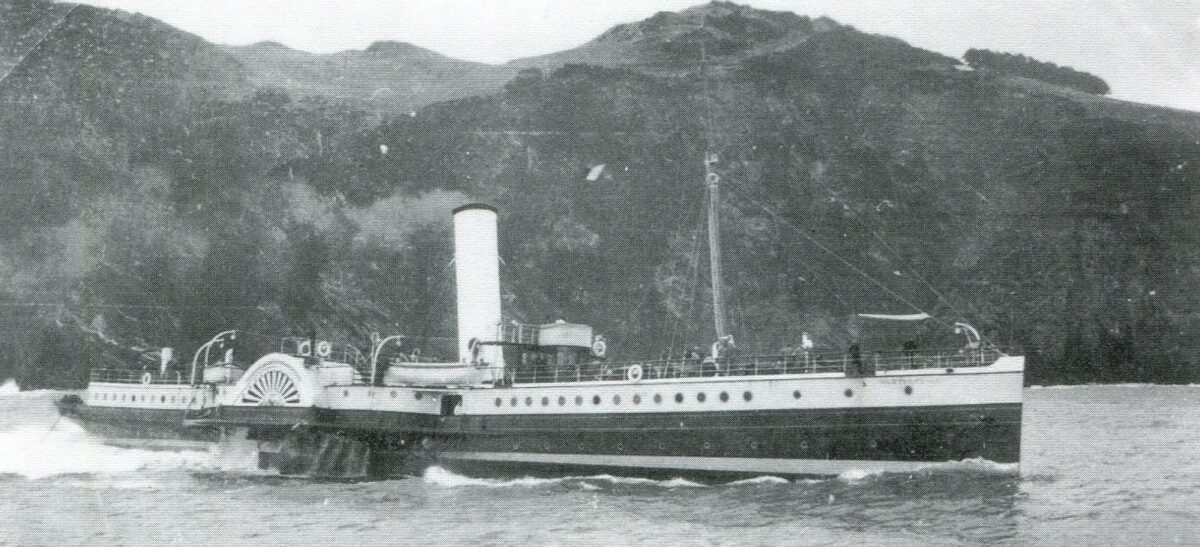
In February 1934 Mr Jeremiah Dwyer, who ran Rocksavage Engineering in Cork, was looking to buy a paddle steamer to offer short excursions on the River Lee in the south east corner of Ireland.
For many years there had been a couple of tenders, which also ran some excursions, based in the area making their main living by transferring passengers and cargo on and off liners, including those of the Cunard and White Star Lines, too large to berth in the harbour as they passed by on their way between the UK and America.

In 1934 this service was provided by two former Wallasey Corporation ferries Rose and Lily. The picture above shows the last of these tenders the Cill Airne, which was built for this service for the Cork Harbour Commissioners in 1962. Although new and not a former Mersey ferry you can see that her design leans heavily on that tradition. If you didn’t know better you might easily presume that she had been a Mersey ferry in an earlier life. She is still around today as a static restaurant and bar in Cork.

But back to Mr Dwyer in 1934. Casting around for a ship for his proposed new services from Cork his eyes fell upon the Duke and Duchess of Devonshire lying laid up in Exmouth Docks. They had been built in 1896 and 1894 respectively for the Devon Dock Pier and Steamship Company’s services from Exmouth and Torquay but by 1930 that business was in steep decline with the Duchess withdrawn from service in 1930.

Then in 1932 P & A Campbell decided to stick their oar into the waters of South Devon and stationed their Westward Ho at Plymouth and Torquay. After an indifferent season in 1932 they decided to try to eliminate the competition by buying the Duke and leaving her laid up for the 1933 season in Exmouth Dock. It must therefore have been a tad irksome for them to have found that the Duchess was reactivated in 1933 to run in competition with them now in the hands of Captain E R F Coleberd.
After two years of all this Campbells decided that their Torquay experiment hadn’t worked and that there was insufficient business to justify basing one of their large paddle steamers there and so withdrew. That left them with Duke of Devonshire on their hands which by February 1934 they were keen to offload.
One of Campbell’s two joint Managing Directors Mr Banks arranged for a meeting with Captain Coleberd to see if he might be interested. Then Mr Dwyer appeared on the scene, was eager to buy and therefore willing to pay a higher price than if Captain Coleberd had tried to get her at a knockdown price just to take the Duke off their hands.
Mr Dwyer offered £1,400 (£101K in today’s money) on the basis that the Duke would be able to obtain an Irish Passenger Certificate to run from Cork. She was surveyed on the grid at Exmouth. The deal was done and the Duke paddled off for her new career as an Irish ship early in May 1934.

However the business for her in Cork turned out to be poor and she lasted there for just two seasons. In 1936 she returned to run from Torquay. Two years later she passed to Cosens who renamed her Consul.
Kingswear Castle returned to service in 2023 after the first part of a major rebuild which is designed to set her up for the next 25 years running on the River Dart. The Paddle Steamer Kingswear Castle Trust is now fund raising for the second phase of the rebuild. You can read more about the rebuilds and how you can help if you can here.
John Megoran
This article was first published on 15th February 2021.


